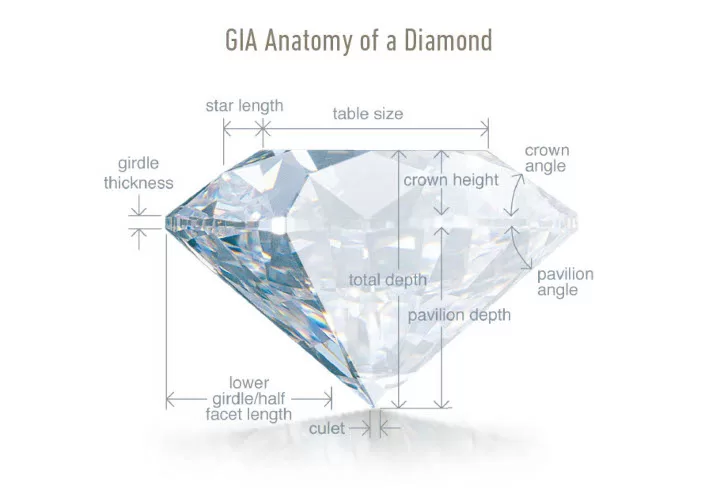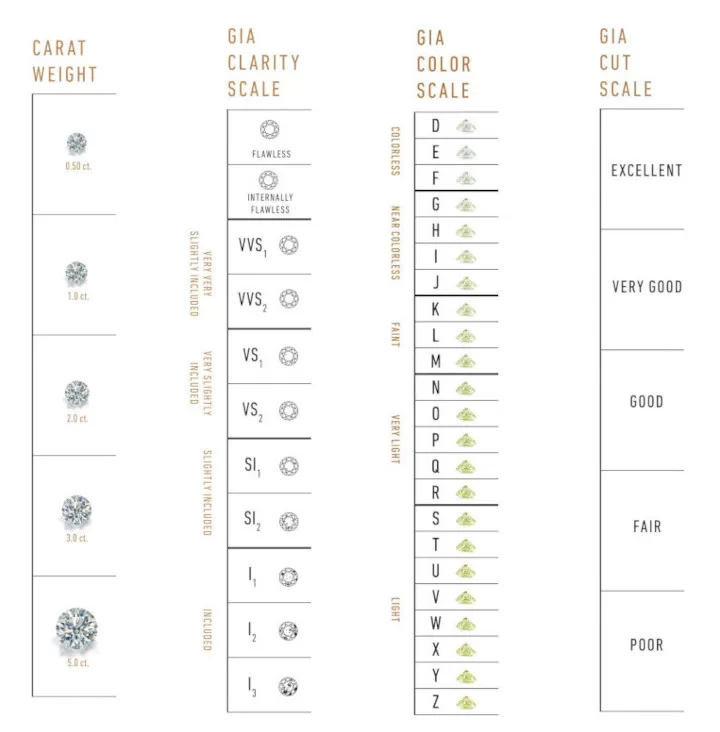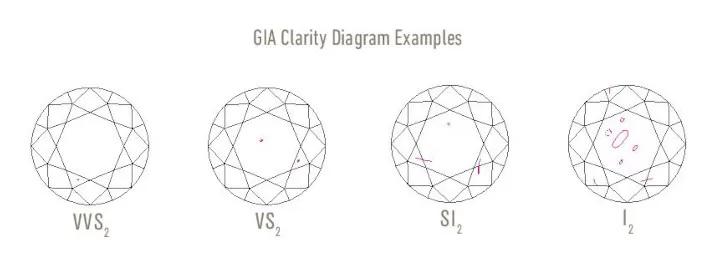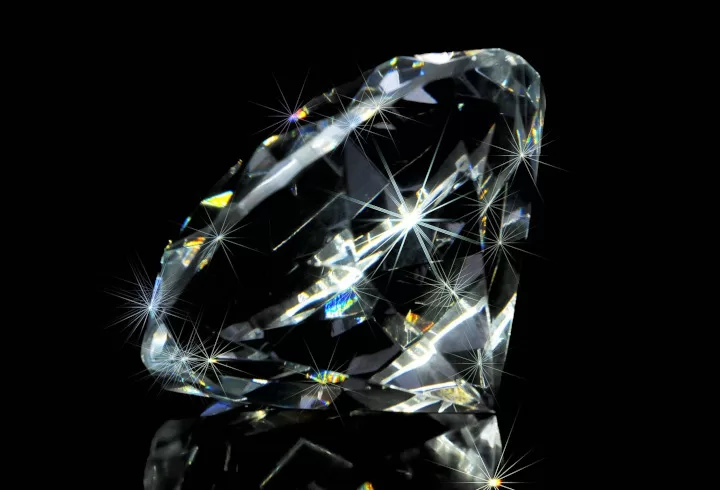
What's more important? Color, clarity, cut, or carat weight?
There's a huge misconception that bigger diamonds are better, while disregarding everything else. When you buy a big diamond with lower quality, it impacts the pricing and may not be worth it. What's the point of having a big diamond that doesn't shine as bright as the others?
Unless you have a ton of money then you can buy the biggest diamond with the best quality, but not everyone has that luxury. In this article, I've included a chart of different diamond qualities. I will show you different combinations of diamond qualities you can use to save money and still have great looking quality jewelry.

First, let's talk about the cut of a stone. In my opinion, it is the most important aspect of a diamond.
The cut of diamonds are graded as such: excellent, very good, good, fair, and poor. My budget friendly recommendation is for you to stay in the range of at least good. This will allow you the option of having a great quality stone without breaking the bank.
If you have a lot of money to spend on a stone then excellent is your ideal choice. Most retail chains will carry stones cut graded between good to poor (this does not including the high end retail chains).

For rings, the color grades I recommend for people that are watching their budgets are color G, H, and I to pair with any clarity VS2, SI1, and SI2.
Remember that if you select a stone with a clarity grade lower than SI2 it will be very included. Many stones lose their durability because of the inclusions.
For example, if you have an I3 that has a feather breaking the crown and pavilion from ½ to ¾ of the stone, low impact to that stone can break it in half.
For earrings and pendants, I would use colors I or J to pair with any clarity of SI1 or SI2. Since earrings and pendants are not close up it makes it harder to see the imperfections.
These are the best combinations I recommend, when you are on a budget and do not want to compromise the quality of your jewelry pieces.
There are stones that I do not recommend as they do not hold any value and jewelry purchases should be considered an investment.
I do not recommend getting CZ or any other synthetic/simulant diamonds. CZ or synthetic diamonds do not have any return value and scratch easily. Those stones are for temporary use and should only be purchased if your budget is under $100. I would use color stones as an alternative to simulants.
The colorless gemstones I recommend in place of diamonds to be budget friendly are white topaz, white quartz or rock crystal, pearl, moonstone, white opal, and white sapphire (usually heated to make clear).

These gemstones are budget friendly and have return value if you chose to sell them in the future. While it is not a lot of value compared to diamonds, it will allow you to get something back in case you need money versus stimulants where you get nothing.
Another stone I do not recommend are lab grown diamonds.
Even though these stones have the same characteristics as diamonds they are still considered synthetic and are not naturally formed liked diamonds or colored stones.
These stones also have no return value, even pawn shops will not offer anything for these stones, but they may offer something for the metal. Lab grown diamonds are often advertised 60%-90% cheaper than natural diamonds which is a RED FLAG. Lab grown diamonds cannot be compared to a naturally formed diamond.
I am not saying that you buy jewelry to sell it.
You should look at it as an investment or an heirloom, something that will hold its value and understanding its true value can prevent you from major loss. Don't you want that assurance in case you need the money? This is an important question people should keep in mind.
4819 S. Monarch Pl, Ontario, CA 91762 (online-only store)
639 S. Hill St., Booth B-5, Los Angeles, CA 90014
Phone: (626) 420-8718
About | Contact | privacy policy | disclaimer
© 2025 LoiTheJewelryGuy.com · All rights reserved.